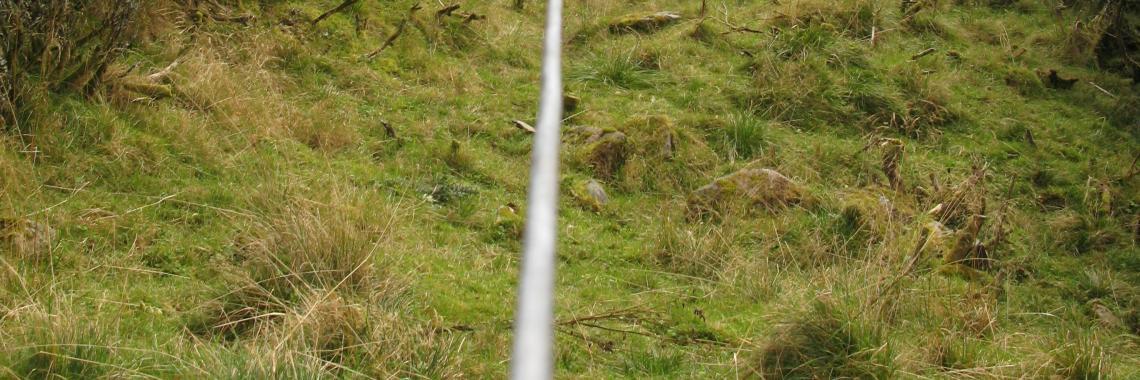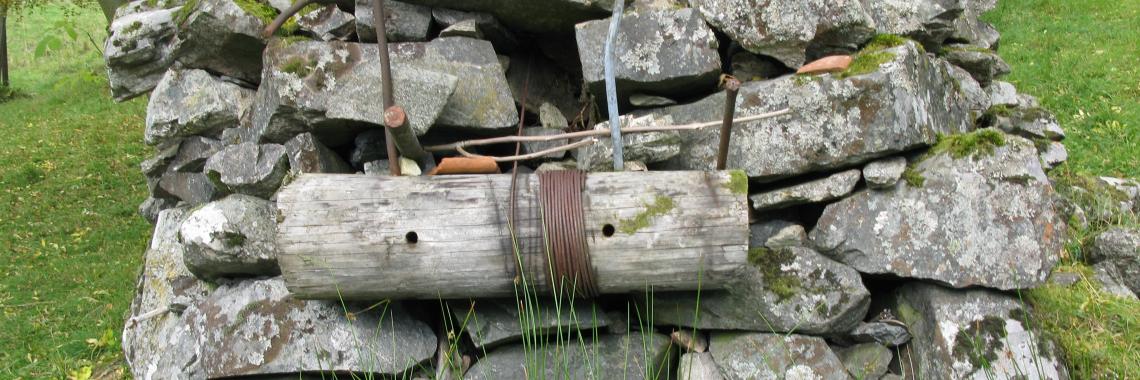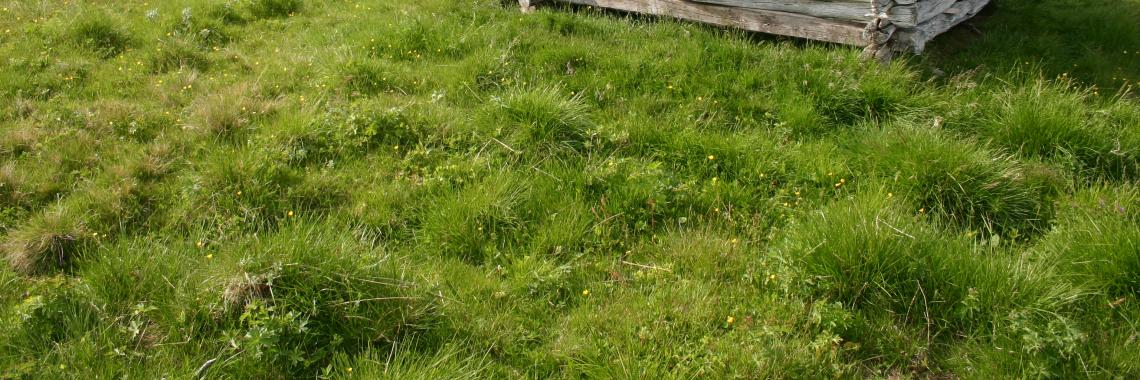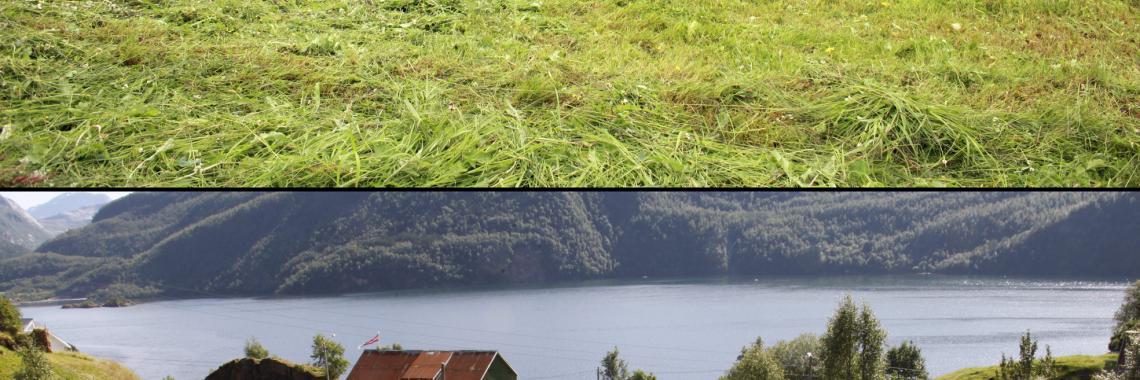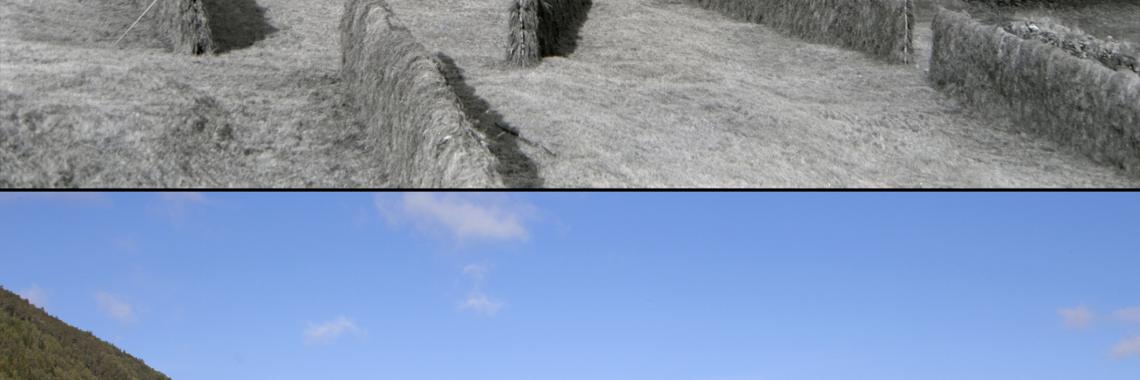Hay making structures in Norway
04.06.2018, by Bénédicte Gaillard
Research: Sebastian Eiter, Oskar Puschmann et al., NIBIO Norwegian Institute of Bioeconomy Research; upload: Bénédicte Gaillard
Hay making structures have been a common feature in the Norwegian agricultural landscape for a long time. As cool and regionally quite wet climatic conditions are unfavorable for cultivation of plant crops, animal husbandry has always been an important part of Norwegian agriculture, especially towards the north of the country where plant production gets increasingly difficult. Before AD 1900 hay was mostly harvested from outfields, mainly forest and mountain grasslands, while infields were reserved for growing of cereals. Later hay fodder has also been produced on infields (Bele & Norderhaug 2013).
Bele, B. & Norderhaug, A. 2013. Traditional land use of the boreal forest landscape: Examples from Lierne, Nord-Trøndelag, Norway. Norsk Geografisk Tidsskrift – Norwegian Journal of Geography 67(1): 12-23.
Hågvar, K.A. 2011. Løypestrengen: Teknisk nyvinning og kulturhistorie frå vår nære fortid. Årbok for Sogn, 80-93. Musea i sogn og Fjordane, De Heibergske samlinger – Sogn folkemuseum.
Hjulstad, O. 1991. Uthushistorie: driftsbygningar på norske gardsbruk frå jernalderen til i dag. Landbruksforlaget, [Oslo].
Skre, B.G. 1994. Havråboka: Soga om ein gamal gard på Osterøy. Stiftinga Havråtunet, Osterøy.
Subsequently to harvesting, grass had to be dried before storage. Dependent on general climate and actual weather conditions, this was done directly on the ground or in simple stacks (Norw.: såter) which do not include physical structures in the landscape. However, other alternatives were stacks built around wooden sticks (Norw. stakk), or drying racks (Norw.: hesjer), which are constructions of vertical wooden sticks interconnected with several levels of horizontal sticks or metal wires on which grass was hung up for drying (Skre 1994). These were either temporary or permanent.
Prior to more intensive rainfall events, hay had to be moved indoor for storage. Hay or fodder barns (Norw.: høyløer/fôrløer) would thus be another type of haymaking structure (Hjulstad 1991). The barns were situated on or close to infield meadows, on the farmsteads or, as so-called outfield barns (Norw.: utløer/uteløer), in forest or mountain areas. Hay barns were constructed as separate buildings or, especially if situated on farmsteads, combined with corn or livestock barns. In the latter case hay was stored on the floor above the livestock (Norw.: høyloft), to ease portioning and passing down the fodder to the animals as needed. The hay floors of these combined barns (Norw.: låver), were often accessed for filling via a ‘barn bridge’ (Norw.: låvebro). Since early Medieval times hay barns were built as timber constructions, preferably with some space between the timber layers to ensure good ventilation. Especially separate hay barns are often more well-kept than, for example, livestock barns, because they were basically not exposed to substances which would accelerate decomposition of timber. Later other ways of construction have taken over.
Often hay had to be transported to the permanently settled farmsteads. Longer distances were frequently covered with sledges after some snow had fallen. However, a physical landscape structure for hay transport down hillsides is zip-lines (Norw.: løypestrenger) (Hågvar 2011). Zip-lines were permanent constructions, and their maintenance or repair required rather sophisticated knowledge and skills. Zip-lines were frequently used at the very steep hillsides along fjord valleys of glacial origin in Western Norway. A more advanced form of zip-lines enabling transport of different goods into both directions was ropeways (Norw.: taubaner). However, these kinds of transport facilities were at least as important for “cash crop” timber as for hay.
By today use of hay as winter fodder has to a large degree been replaced by silage, either from permanent silos or round bales. Round bales are temporary landscape structures, but can be quite visible. Vernacularly they are also called “tractor eggs”. After having been covered with white plastic for quite some time, other colors have been available in most recent years. In 2016, farmers could order light pink plastic, thereby express their support and contribute with a financial donation to work against breast cancer, in 2017 the color was blue to fight prostate cancer, and in 2018 the color is yellow to support work against any cancer affecting children. However, recent focus on environmental problems connected to plastic waste has started to motivate several farmers to use round bales to a somewhat lesser degree, and store as much fodder as possible in permanent silos.
Non-manured or fertilized hay meadows are considered as a cultural landscape feature of special value in terms of biological diversity. However, the number and area covered by such hay meadows has decreased a lot. Areas which were difficult to access for increasingly large machinery have been abandoned and become subject to woodland regrowth, while other areas have been intensified to increase yields.

